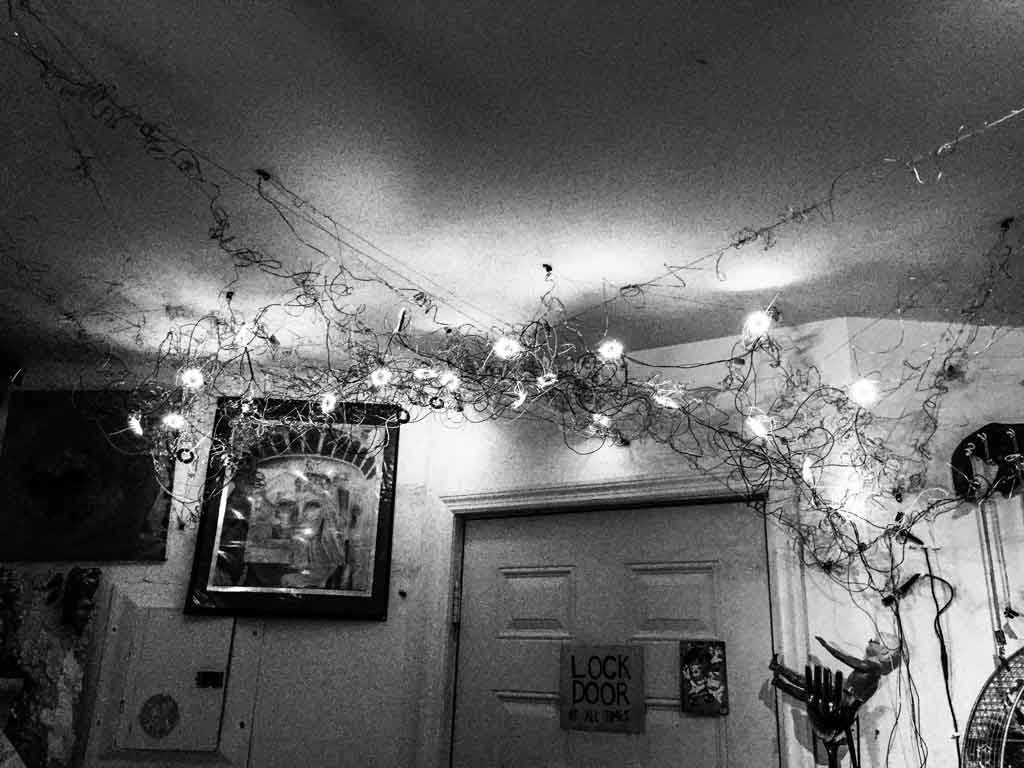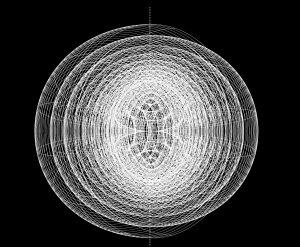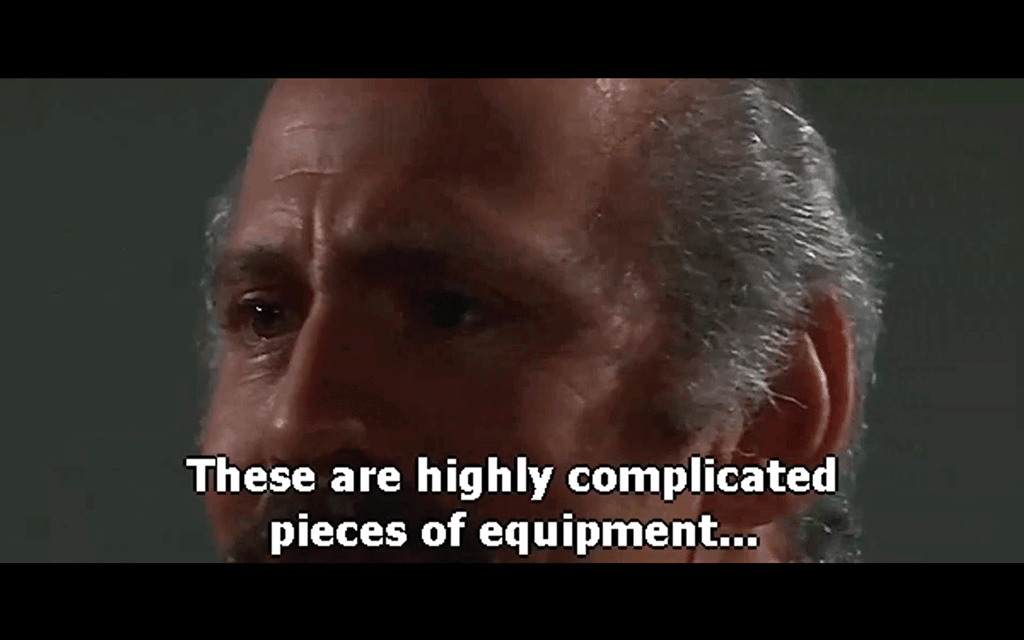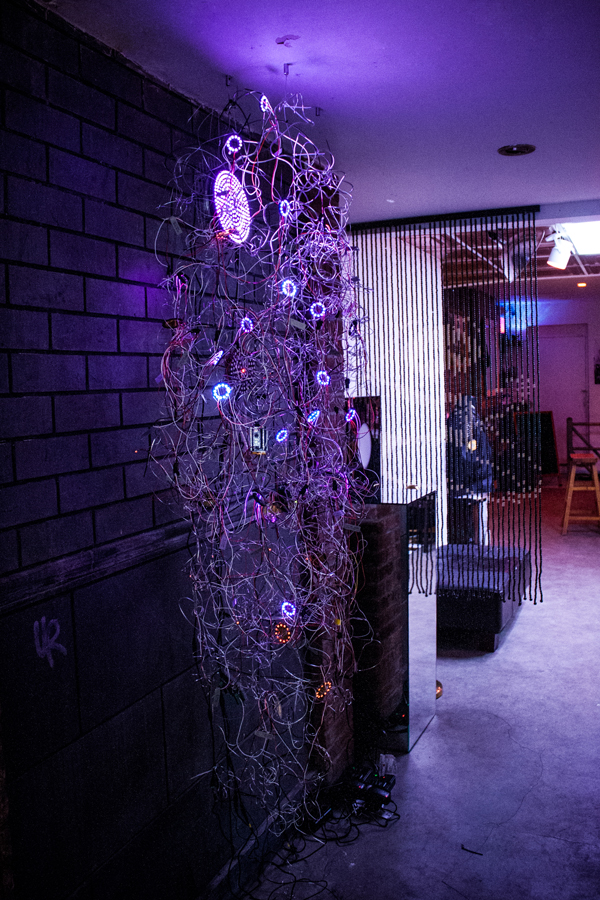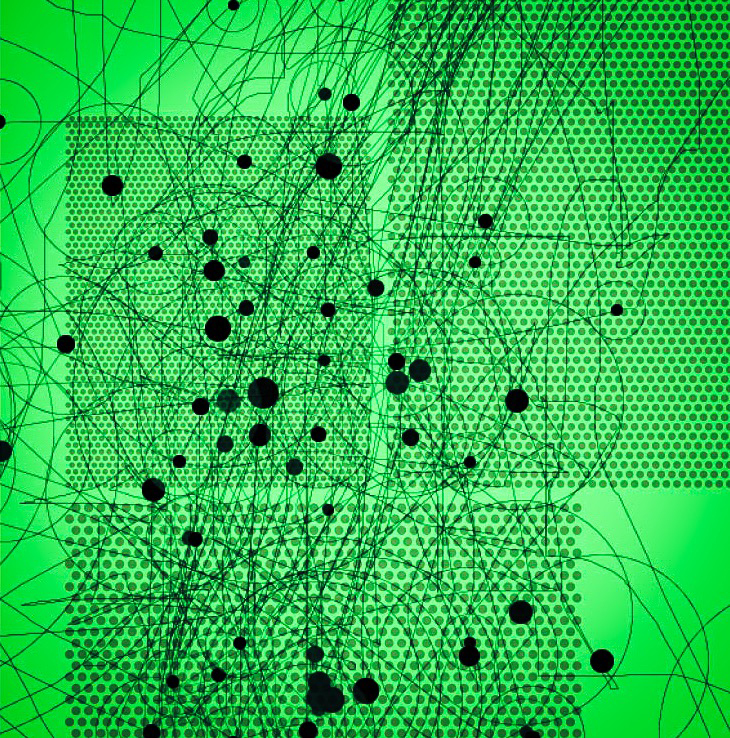– To Sarah, for opening my eyes.
fear /fɪr/
n.
1. a distressing emotion aroused by impending danger, evil, pain, etc. [uncountable]
2. a specific instance of such a feeling. [countable]
3. concern or anxiety; worry; solicitude. [countable]
Source: WordReference Random House Learner’s Dictionary of American English © 2018
Fear
Fear is a feeling induced by perceived danger or threat that occurs in certain types of organisms, which causes a change in metabolic and organ functions and ultimately a change in behavior, such as fleeing, hiding, or freezing from perceived traumatic events.
Trauma. The Emotion Machine III “The Portal” at @DRTYSMMR.
I recently discovered that my third machine was experiencing trauma.
Last summer, I installed my third sensitive machine in the shop of my dear two friends Jeff Jassky and Alfredo Lejia in Bushwick, NY. The first machine was built at the Fat Cat Fat Lab West Village-Manhattan and evolved like the second prototype placed in my studio.
The second (A) and the third (B) machines are working at the same time. They are twins. Technically they are constituted by the same hardware and software, and they are calibrated at the same energy rate. Perhaps we can presume that these two artifacts as fraternal twins having the same profile, will develop the same reaction to similar conditions. But that is not a necessary truth. Two different beings can react diametrically opposed. In fact, they had a remarkably different response to the two environments they were placed. The first conclusion was simple: the electromagnetic sensor was working properly. The sensitive machine, its senses, and its reactive mind was perceiving the world and expressing meaning about it.
Space in my studio can be described as a controlled, quiet environment, basically because just the machine and I inhabit this place. This machine is designed to feel others’ energy, and it is especially sensitive to the human body. If one gets close to the interface it will react, changing the color and the frequency of the light.
Space in the shop is intense. There are people constantly coming and going. We all knew that the shop will be a good contrast. When I turned on the machine (B), I was surprised. It was stuck in a loop reading at a high rate of energy. But stuck. At that moment I haven’t understood what was going on. I could comprehend why the behavior was different but I wasn’t expecting this error, the loop. Having the same calibration, the behavior of both machines was so different. It was kind of paroxysm. In the subsequent days, I made changes in the mind’s model increasing its tolerance threshold to adapt the Machine-B to the shop.
Vision is not the metamorphosis of things themselves into the sight of them; it is not a matter of things’ belonging simultaneously to the world at large and a little private world. It is a thinking that unequivocally decodes sings given within the body. 1
Janet Adler, “Looking for Me” shows Adler developing a common language and a means to connect through imitation. 2
This winter (2017), I met the American Artist and Art Therapist, Sarah Valeri. Sarah and I meet near the MoMA PS1 to chat about The Emotion Machine. I was excited to meet her. The first time that I saw Sarah’s work was because of her contribution to ROOM, A psychoanalytic space that I am collaborating. I instantly connected with her drawings ‘The Fugitives Astronomy Club.‘
Between the killing cold, her coffee and my tea, Sarah started to ask about the sensitive machines. We were captivated by a neverending conversation about how an object can have the ability to perceive the world artificially and how this deconstructive perceiving process was deeply related to the art therapy process. Suddenly, we were comparing the machine perception and its functioning with how the visual language emerges as the communication tool between the inner and the outer world of an autistic child.
Sarah no just opened my eyes, but my soul, to understand that the Machine-B experienced trauma. I cannot stop thinking about the uncountable fear this machine could be experiencing. The fear of the unknown.
Things have an internal equivalent in me; they arouse in me a carnal formula of their presence. Why shouldn’t these correspondences, in turn, give rise to some tracing rendered visible again, in which the eyes of others could find an underlying motif to sustain their inspection of the world? 3
The fact that this machine was able to produce a traumatic reaction was beyond any of my expectations. The Machine-B stuck loop was, in fact, a language of fear, a real paroxysm. By definition, fear is a distressing emotion aroused by impending danger capable of causes metabolic, organ function and behavioral change. The Machine-B was openly communicating with the lexicon that I designed, the explosion of energy that it was perceiving in the place. The shop space was so overwhelming that I had to suppress its original controllers and set a new system of values to help the machine to adapt.
The second conclusion was astonishing: This reactive object can artificially perceive the world and process expressions full of meaning, as rich as experiencing trauma.
Some days after meeting her, Sarah sent me an email sharing the work of Janet Adler. The dialogue between Adler and the child shows how the meaning don’t become in a linear assimilation but a random spatial and relational processes in time, a chance. Her example, makes me think that the projection of ourselves on an external object articulates the symbols of our private language into symbolic systems to establish a bond, a sort of communication bridge to produce sense. —
- (1) Marleau-Ponty: Eye, and Mind. Essays on Painting. (p.132)
- (2) Sarah Valeri’s email about Janet Adler.
- (3) Marleau-Ponty: Eye, and Mind. Essays on Painting. (p.126)
![]()
